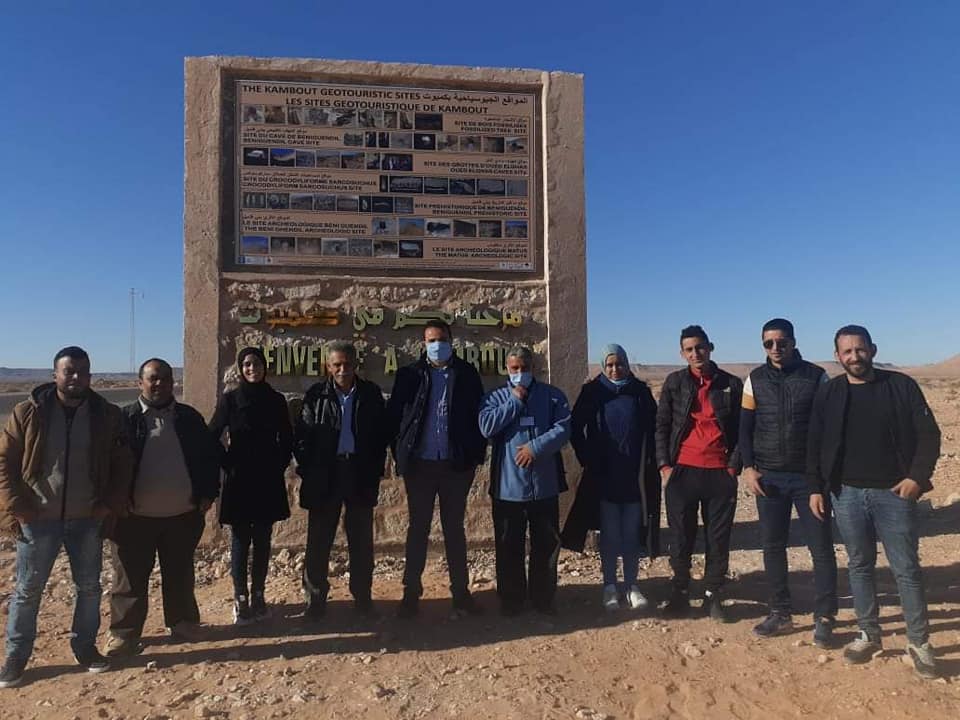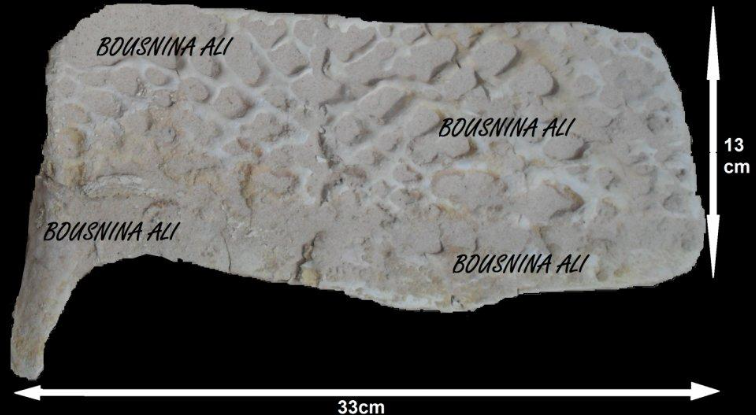
Kambout… This small village overlooking the city of Remada from the west, 12 km away, which is considered a gateway to the vast desert in southern Tunisia up to the Green Tower, has a population of approximately 150 families.Not far from this beautiful village lies a long history of successive civilizations, which is evident through its newly established geo-tourism path, the result of a youth initiative that contributed to the bulk of the introductory work on these sites, the prehistoric sites of Beni Qandil, the archaeological site of Matous, the sites of the giant crocodilian form Sarcosuchus, and many other sites that will sail. Its visitors in ancient civilizations.At the entrance to the village, the visitor finds a stone sign identifying these sites, created by a group of young people from the region with funding from the United Nations Development Program (PNUD) in 2019.
Discovery of bone plates of a crocodile that lived in Tataouine 112 million years ago

Professor Ali Bousnina, from the city of Tataouine, found 12 bone plates of Sarcosuchus, an extinct genus of crocodilians that lived in Africa and South America 112 million years ago during the Lower Cretaceous period, and is one of the largest crocodile-like reptiles ever.The length of the “Sarkus” is twice the length of the saltwater crocodile, meaning approximately 11 to 12 meters, and its potential weight is 8 to 10 tons.The discoverer of these bone sheets confirmed his discovery in 1996 of 4 teeth, each measuring between 8 and 10 centimeters in length, belonging to this giant reptile, which encouraged him to continue searching for the remains of this animal for many years, until he found pieces of bone belonging to part of the pelvis. Parts of ribs, some complete vertebrae, some of which were broken, and part of a leg bone, in addition to finding more teeth and a shoulder bone.
In 2009, Bousnina discovered the first complete site for this giant reptile in Jebel Kambout in Tataouine Governorate, which includes 12 bone plates, most of which are in good condition, in addition to his discovery of the largest Sarcosuchus tooth found in Tunisia, measuring 13 centimeters in length, and a piece of its jaw measuring 30 centimeters in length.Professor Ali Bousnina also confirmed that the site was discovered in 2009, and was excavated in 2014, while it was published in the media in late 2018. Only 9 plates were talked about, while their original number was 12, demanding that the fate of the remaining plates and the fate of other discoveries in the region be known and that they be returned to the museum in the region.